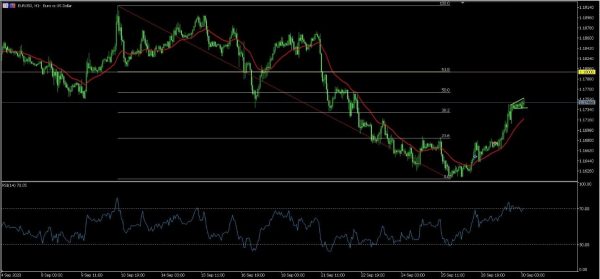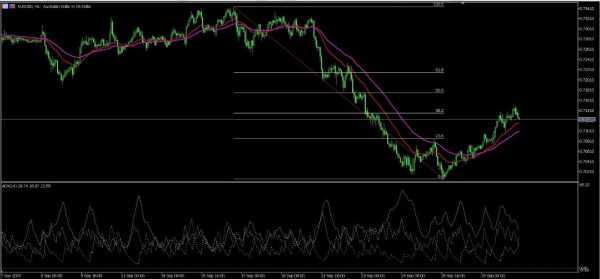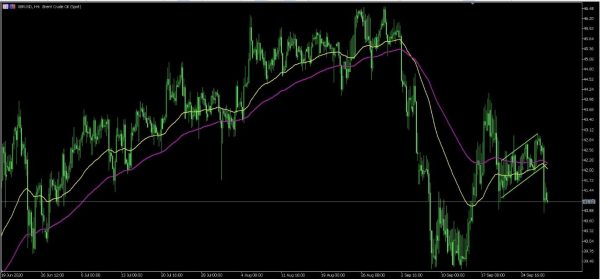The Japanese yen was little changed during the Asian session as traders reacted to the country’s industrial production data. According to the statistics office, the preliminary industrial production for August rose by 1.7%, which was better than the 1.5% that analysts were expecting. The agency believes that production increased by 5.7% in September and by 2.7% in October. Other data showed that the country’s retail sales dropped by 1.9% in August. That was better than the expected drop of 3.5%. These numbers show that the Japanese economy has started to bounce back.
The Australian dollar rose slightly during the Asian session as traders react to the Chinese PMI data. Data from China Logistics showed that the country’s manufacturing PMI increased from 51.0 to 51.5 in September. That was better than the analysts’ estimates of 51.2. The non-manufacturing PMI increased to 55.9 while the composite PMI increased to 55.1. Data by Caixin and Markit found that the PMI declined from 53.1 in August to 53.0 in September. Still, with the PMI above 50, it’s a sign that the economy is still in recovery mode. Meanwhile, data from Australia showed that building approvals declined by 1.6% in August after rising by 12% in the previous month. That decrease was partly because of the lockdowns in Victoria.
The economic calendar will have several important events today. In the United Kingdom, the Office of National Statistics (ONS) will release the final reading of third-quarter GDP data. This being the final reading, analysts don’t expect a significant change from the reading. They see GDP contracting by 20.4% in the quarter. In Germany, we will receive the retail sales and import price index data while in the Eurozone, we will get the preliminary CPI numbers. In the United States, the Bureau of Economic Analysis will also release the final reading of Q3 GDP data. Also, the EIA will deliver its crude oil inventory numbers.
EUR/USD
The EUR/USD pair rose during the first presidential debate between Donald Trump and Joe Biden. It reached a high of 1.1755, which is a few pips below the 50% Fibonacci retracement level on the hourly chart. The price is also being guided higher by the dynamic support of 25-day exponential moving average while the RSI has moved to the overbought level. It is also forming a small bullish flag pattern, which means that the pair is likely to continue rising as bulls aim for the next resistance at 1.1800.
AUD/USD
The AUD/USD has been in a strong upward trend in the past few days. This has seen it rise from a low of 0.7000 to the intraday high of 0.7150. On the hourly chart, the price is slightly higher than the 25-day and 50-day exponential moving averages. The price is also along the 38.2% Fibonacci retracement level while the average directional index has started to fall. Therefore, the upward trend is likely to remain if the price is above the two moving averages.
XBR/USD
The XBR/USD pair declined sharply to an intraday low of 40.80 after the inventories data by the American Petroleum Institute (API). On the four-hour chart, this price was the lowest since September 16. The price is below the 25-day and 15-day EMA. Also, it has moved below the previous channel that is shown in green. This means that bears have prevailed, which is likely to see the pair move lower. However, there is also a likelihood that it will retest the channel again.
















